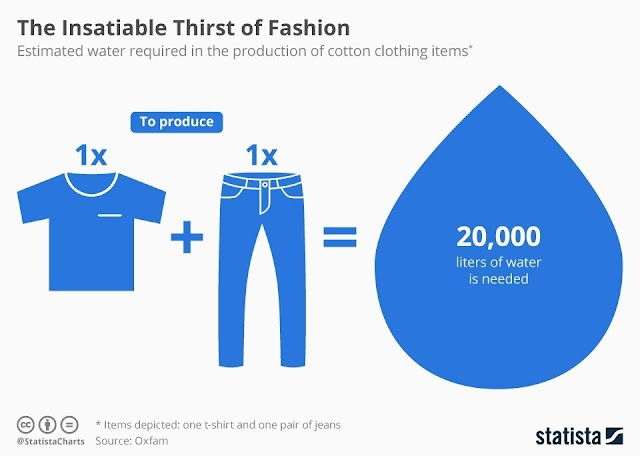Does buying second-hand clothes help fight climate change?
In the year 2018, the fashion industry was responsible for more greenhouse emissions than the combined economies of France, Germany, and the United Kingdom. Data from the United Nations Environment Programme also show that the fashion industry is responsible for more emissions than international flights and water transportation combined, highlighting the need for sustainable fashion practices.
The fashion industry impacts the climate in a number of ways briefly detailed below.
How fashion drives climate change
The process of producing and transporting clothes to the end-user consumes a lot of energy, most of which is gotten from burning fossil fuels. This leads to the release of greenhouse gases that warm the atmosphere and contribute to climate change.
The most common material used in making clothes is a form of plastic called polyester. It is durable and easy to clean, however, it is made from crude oil- a fossil fuel. It also spends hundreds of years in dumpsites when disposed of, because it decomposes very slowly. On the other hand, clothes that are made of more organic materials release methane (a greenhouse gas) when they are degraded, driving climate change.
Furthermore, the production of new clothes consumes a lot of water- up to 93 trillion liters of water per year. On average, it takes 10,000 liters of water to produce a pair of jeans from cotton, enough for the average person to drink for 10 years. Meanwhile, about 4 billion people around the world lack access to clean drinking water for at least one month each year.
How buying thrift clothes help
By buying second-hand clothes also known as thrift, Okrika, or Akube, you are contributing to reducing the demand for new clothes. This is because as more people buy fewer new clothes, fashion companies would be forced to reduce their production to forestall huge losses.
In addition, you will also be preventing clothes that are still of good quality from ending up prematurely in dumpsites, littering the environment, and contributing to climate change.
Since second-hand clothes are generally cheaper (and in many cases of higher quality) than new ones, buying them is a clever way to save money while still following the latest fashion trends. It is also a great way to get vintage fashion pieces and brands at cheap prices.
Finally, buying second-hand clothes is a great way to support small thrift-selling businesses that are helping to combat climate change. It’s one way to put your money where your mouth is if you are concerned about fighting climate change.
In conclusion, buying more thrift clothes rather than new ones not only saves you money, but it also protects the environment, addresses water scarcity, supports the growth of sustainable businesses, and fights climate change. Make a decision to be more conscious of the environmental and climate change impacts of your wardrobe, and consider buying more second-hand clothes rather than new ones going forward.
P. S. Have you experienced any challenges while trying to buy thrift clothes? Let us know in the comment section.





Comments
Post a Comment